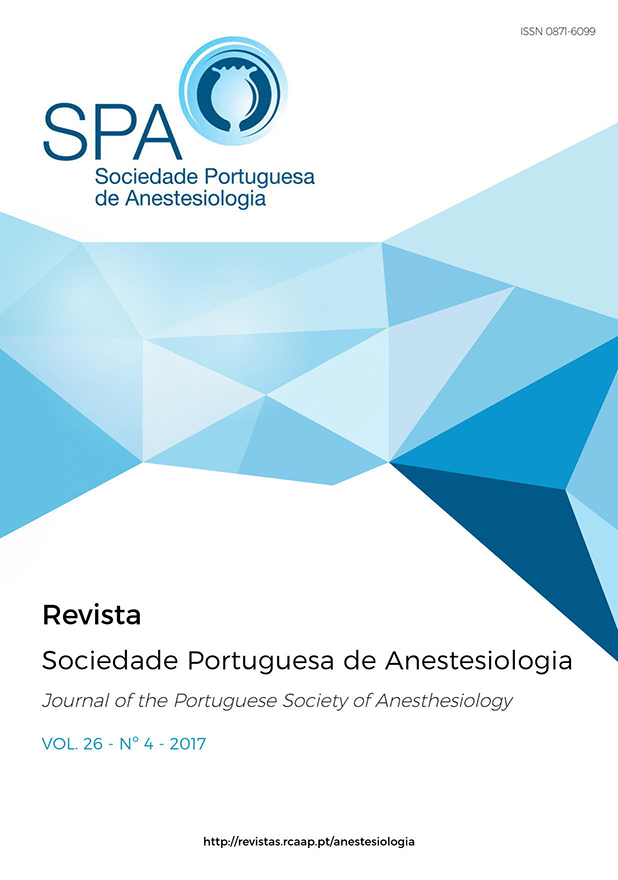Analgesic Management of Pectus Excavatum repair in children: a single center experience
DOI:
https://doi.org/10.25751/rspa.12662Keywords:
Pectus excavatum, Epidural analgesia, Analgesic effectiveness.Abstract
Background: The Nuss procedure has gained acceptance as a safe technique for pectus excavatum repair. Despite being minimally invasive, this procedure is associated with severe postoperative pain. The aim of the study was to evaluate the efficacy of our perioperative pain control strategies and related complications.
Methods: Patients submitted to the Nuss procedure from January 2007 to December 2015 were retrospectively analyzed. Patient’s clinical files were reviewed and the following data was collected: demographic and preoperative auxiliary diagnostic tests, anesthetic and surgical features, pain management, analgesic effectiveness (Visual Analogue Scale - VAS) and related complications.
Results: Combined general + epidural anesthesia was performed in 144 patients (98,6%). The T10-T11 epidural space was accessed in 51,4%. Epidural catheter was placed into the epidural space 5 cm (±SD 0,73). The local anesthetic more frequently used was ropivacaine 0,2% (55,5%). Epidural opioids were also used in 74 patients (51,4%). Local anesthetic epidural infusion was initiated 62min (± SD 23,1) after the initial bolus. The analgesia was good or excellent (VAS<5) in 135 patients (93,8%) on the day of epidural catheter´s removal. Analgesia-related complications on patients under epidural analgesia occurred in 40 patients (27,8%): postoperative nausea and vomiting (50%), pruritus (37,5%), hypotension (5%), urinary retention (5%) and Horner syndrome (2,5%).
Discussion/Conclusions: Epidural thoracic analgesia, according to the current literature, is the most effective technique for postoperative pain control in patients undergoing Nuss procedure. We confirm the effectiveness of our pain control strategies with low severity complications and no impact on the postoperative course.
Downloads
Additional Files
Published
How to Cite
Issue
Section
License
Articles are freely available to be read, downloaded and shared from the time of publication.
The RSPA reserves the right to commercialize the article as an integral part of the journal (in the preparation of reprints, for example). The author should accompany the submission letter with a declaration of copyright transfer for commercial purposes.
Articles are published under the terms of the Creative Commons Attribution Non-Commercial License (CC BY-NC).
After publication in RSPA, authors are allowed to make their articles available in repositories of their home institutions, as long as they always mention where they were published.


